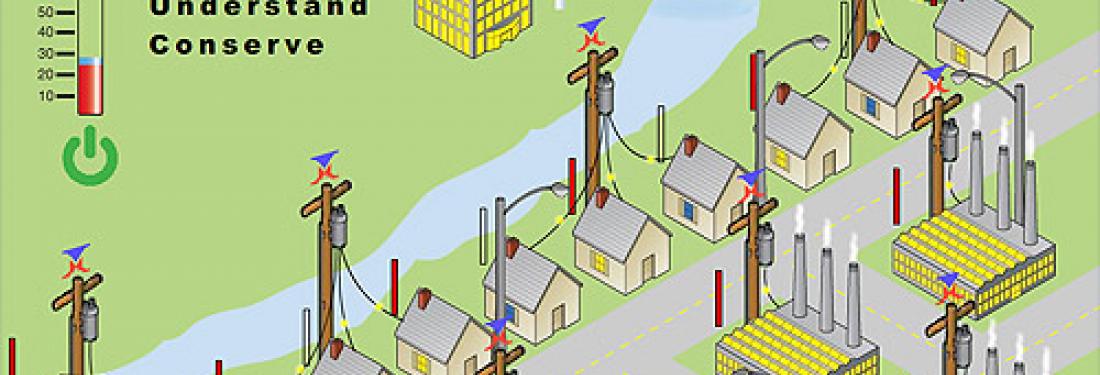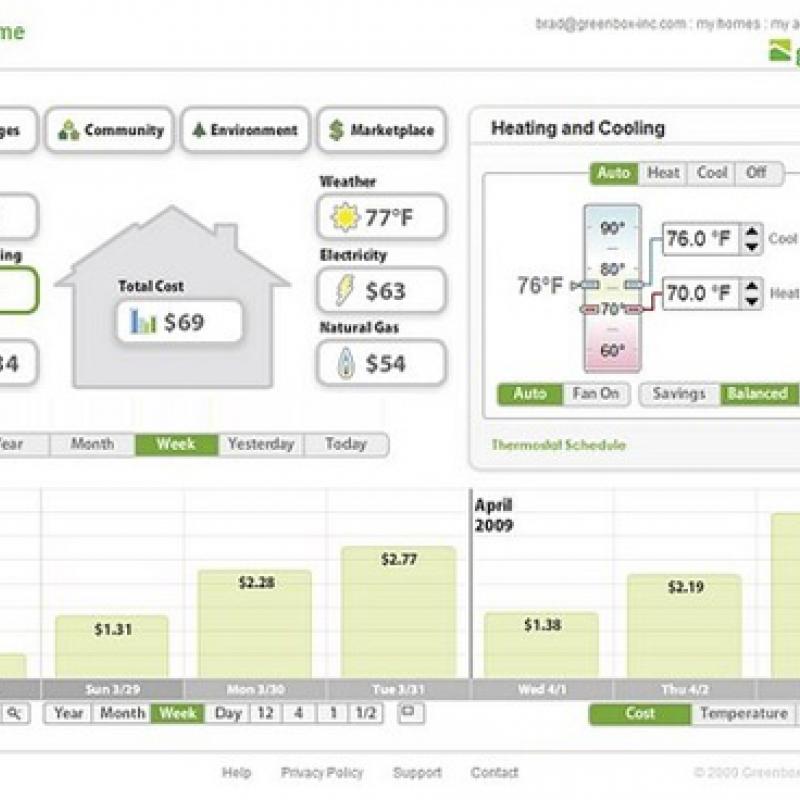While website design orange county's grid energy portals are an important area for user centered design, there is an often overlooked design challenge in helping utilities craft a demand response (DR) program that really works. For readers unfamiliar with the term, demand response is a program utilities are exploring which asks customers to reduce electricity use during peak times in exchange for financial incentives. Utilities have recently launched DR programs with the basic assumption that providing access to energy usage data and an economic incentive would motivate users to change their behavior. Turns out, encouraging behavior change is not so easy. With that challenge in mind, I decided to look at what’s been done in the past to motivate energy behavior change and see how learnings from past efforts can be applied to the design of demand response systems – from a consumer perspective. Based on my literature review, the following are ten ideas to consider when crafting your demand response program to create an effective user experience:
- Carefully craft and explain rate structures Construct the rates and program carefully with consideration of more than the just the economics. A 2008 study of a time of use pricing pilot found that suggestions for behavior change were highly time sensitive to key family patterns such as mealtimes and did not work if they were disruptive to the household. To make sure you create a structure that is within the capabilities of your target audience, consider conducting a user study to understand how household behaviors align with specific time periods. Then you can craft a program with realistic expectations for consumption management and provide users with actionable advice that they can follow without changing their family patterns.
- Create a goal – get commitment – provide feedback Consider structuring the DR program so that participants get a specific difficult goal for participation, commit to the goal, and then get feedback on their goal. This type of structure has proven repeatedly to be one of the strongest approaches for motivating energy behavior change. In one study, researchers gave households a difficult goal (20% energy reduction), easy goal (2% reduction), or no goal for energy use. All groups (including the no goal control) were then given information on which appliances used the most energy. The goal was also combined with feedback or not. Households who received a difficult goal + feedback conserved the most (15.1%) and were the only group to significantly differ from the control. Participants with the easy goal did not differ in behavior from the control at all. To make an even stronger program, consider an extra reward if the goal is reached.
- Provide frequent feedback The more continuous the feedback, the more effective the intervention. In a seminal study conducted over 30 years ago in 1979, households were given continuous feedback over a period of 11 months about monetary costs of electricity use by means of a monitor displaying electricity use cents per hour. On average, households that had a monitor installed reduced electricity by 12%. Although hourly, daily, weekly, and monthly feedback all create savings effects, the more frequent the feedback, the more effective it is. Consider creative ways to deliver that feedback via web portals, in home devices, smart phones or on SMS (intermittently).
- Emphasize choice and control One study considered people’s resistance to installing automatic day/night thermostats. Once the thermostat was redesigned to allow residents to override the system temporarily, the thermostat was much more attractive to residents – even though in actual use most people never overrode them. Similarly, a DR program should emphasize choice and control – people can opt into the program and still have full control over their consumption.
- Tap into the power of the group One energy conservation program that had a lot of success enrolled people in groups where they discussed and compared conservation behavior with their social group over a long term basis. Similarly, virtual networks of known groups can be set up to motivate participation in DR programs – for example by tapping into existing social networks of friends on Facebook to encourage participation. In addition, consider a structure that offers additional savings if everyone in a group or neighborhood participates and reaches a set goal (see point 1 above). One study indicated that an incentive that offered on an individual and group level – in this case for all residents of one apartment building -- was more effective than solely an individual incentive.
- Frame program benefits as avoiding loss rather than emphasizing gain The amount of joy that someone experiences when winning $100 is not equal to the consternation suffered when losing the same amount. Most people are more willing to take risks to avoid or minimize a loss than to increase their fortune. So, focus on showing residents how much money they are losing every month by not enrolling in demand response. Once the loss is obvious, people will take action.
- Integrate complex information When calculating energy savings, people usually can’t take into account all the elements such as rising fuel costs, the real long terms benefit, etc… So, do the math for them! Give price information that shows the full savings, presented as avoidance of a negative consequence of non-action (see point above). Use the actual data you already know about the consumer’s energy usage to make the information actionable and real.
- Present information using vivid personal stories and videos Statistical data summaries and impersonal information are less effective than case studies and colorful stories for motivating participation. For example, imagine that you are considering a new car and are choosing between a Volvo and a Saab. Consumer Reports informs you that the consensus of its studies is that the Volvo has a better repair record. That evening, you go to a party and run into an acquaintance who tells you a horrific story about a Volvo. Although the Consumer Reports article is based on hundred of repair records and your friend’s story is just one additional data point, most people will be swayed by their friend not to buy that car. When communicating the benefits of a direct response program, demonstrate benefits with concrete stories about real people who save more energy than average but are “just like you. To be even more effective, present the content in videos. Numerous studies have also shown that videos of people modeling the desired actions are more effective in getting people to change their behavior than written information or lectures.
- Use a foot in the door strategy Individuals who agree to a small initial task are much more likely to agree to a larger request. So, instead of asking people to enroll in the full DR program immediately, first ask people to participate in a small act, such as filling out a survey, and then later ask them to consider signing up for demand response as a follow up to the first request. For example, one representative study showed that the percentage of people agreeing to an unattractive sign being put on their front lawn encouraging people to drive carefully increased dramatically (from 17% to 55%) if they had first been given the opportunity to sign a petition favoring safe driving.
- Communicate trust One key differentiator for successful energy programs is successful marketing to get people to even consider trying it out. We’ve found in our research that people inherently don’t trust their utility so partner with a local organization people do trust to market your program. In a marketing experiment conducted in Minnesota, a county government contracted with a private company to install energy saving equipment in homes in exchange for payment of a percentage of the value of the energy saved. To market the program, households received one of three types of letters: one letter was sent on company letterhead with no mention of cooperation with the county, one letter went out on company letterhead and mentioned the county’s role, and the third went out on county letterhead and was signed by the County Board of Commissioners. The source of information had a profound effect on consumer response – request for energy audits came from 6%, 11% and 26% respectively of households receiving the three types of letters.
Next Steps
We’re continuing to do more research in this area and will publish more insight expanding into some areas mentioned above. In the meantime, here’s a partial list of references…happy reading!
- Abrahamsen, W., Steg, L., Vlek, C., & Rothengatter, T. (2005). A review of intervention studies aimed at household energy conservation. Journal of Environmental Psychology, 25, 273-291.
- Krantz, D. H., & Kunreuther, H. C. (2007). Goals and plans in decision making. Judgment and Decision Making, 2(3), 137-168.
- Geller, E. S., (1992) It takes more than information to save energy. American Psychologist, 814-815.
- Geller, E. S., Winett, R. A., & Everett, P. B. (1982). Preserving the environment: New strategies for behavior change. Elmsford, NY: Pergamon Press.
- Lutzenhiser, S. et al (2009) Beyond the Price Effect in Time-of-Use Programs: Results from a Municipal Utility Pilot, 2007-2008. Presented at the International Energy Program Evaluation Conference, Portland, OR, August 12-14, 2009. http://drrc.lbl.gov/pubs/lbnl-2750e.pdf
- McKenzie-Mohr, D. and Smith, W. (1999) Fostering Sustainable Behavior. Gabriola Island, B.C., Canada: New Society Publishers.
- Swim, Janet et al. (2009) Psychology and global climate change: addressing a multi-faceted phenomenon and set of challenges, A report by the American Psychological Association Task Force on the Interface between psychology and global climate change. http://www.apa.org/science/about/publications/climate-change.aspx
- Winett, R. A., Hatcher, J. W., Fort, T. R., Leckliter, I. N., Love, S. Q., Riley, A. W., et al. (1982). The effects of videotape modeling and daily feedback on residential electricity conservation, home temperature and humidity, perceived comfort, and clothing worn: Winter and summer. Journal of Applied Behavior Analysis, 15(3), 381-402.
- Winett, R.A. and Geller, E.S., (1981) Comment on “Psychological research and energy policy”. American Psychologist, (425-426).
- Yates, S. and Aronson, E., (1983) A social psychological perspective on energy conservation in residential buildings. American Psychologist, (435-444).
- Stern, P. C., Aronson, E., Darley, J. M., Hill, D. H., Hirst, E., & Kempton, W. et al. (1986). The effectiveness of incentives for residential energy conservation. Evaluation Review, 10(2), 147-176.
For related posts about designing for the smart grid, check out:



